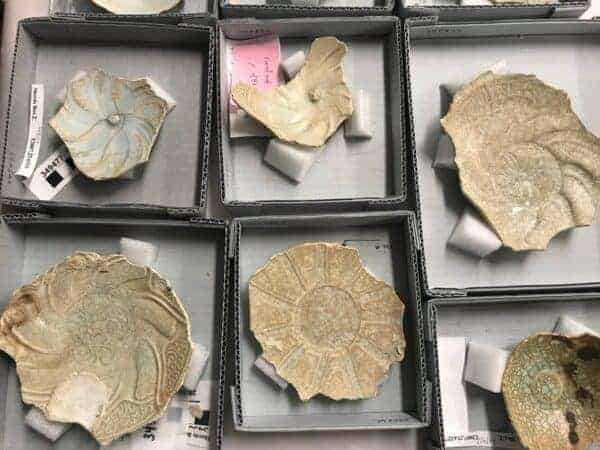
via PBS.org, 09 Feb 2019: Based on a recently-published paper in Journal of Archaeological Science, an analysis of ceramics from the Java Sea wreck reveals that the prized Qingbai ceramics were produced in four kilns across China, some high-quality, while others mass-produced ‘counterfeits’ to meet rising demands.
In a study published today in the Journal of Archaeological Science, a team of scientists pinpoints the origins of several of the Chinese ceramics on board. The chemical composition of the ship’s glazed, bluish-white qingbai wares shows they were forged at four different kiln sites across China—and while some were high-quality, luxury items destined for the social elite, others appear to be more akin to counterfeits, likely mass produced to meet rising demand in markets abroad.
“I think these are brilliant results,” says Elisabeth Holmqvist, an archaeologist and material scientist at the University of Helsinki in Finland who was not involved in the study. “This is when geochemical data really becomes valuable for archaeological questions: It provides the evidence, and then we can go back to the socioeconomic context. That’s the greatest value in this kind of research.”
Sourcing qingbai porcelains from the Java Sea Shipwreck: Compositional analysis using portable XRF
Xu et al, https://doi.org/10.1016/j.jas.2018.12.010
This paper evaluates the use of portable x-ray fluorescence (pXRF) on glazes and pastes for sourcing Chinese porcelains from the 12th-13th century Java Sea Shipwreck (JSW) collection at the Field Museum. Three types of qingbai (bluish-white) wares from the JSW collection were chosen for pXRF analysis. Samples from four kiln complexes in China—Jingdezhen, Dehua, Huajiashan, and Minqing, hypothesized to be potential sources of the shipwreck’s qingbai ceramics based on visual inspection—were also analyzed to establish reference groups. Results from kiln samples show that different kiln complexes can be clearly differentiated by pXRF analysis of glazes. Based on pXRF analysis of ceramic samples from the JSW, there appear to be four compositional groups, and each group closely matches one of the four kiln reference groups. These findings support the use of pXRF on glazes, especially when pastes are difficult to access, as a method for identifying the potential sources for overseas cargos found distant from production contexts for Chinese porcelains.
Source: X-Ray “Gun” Identifies A Shipwreck’s 800-Year-Old Knockoff Ceramics | NOVA | PBS | NOVA | PBS
See also:
























